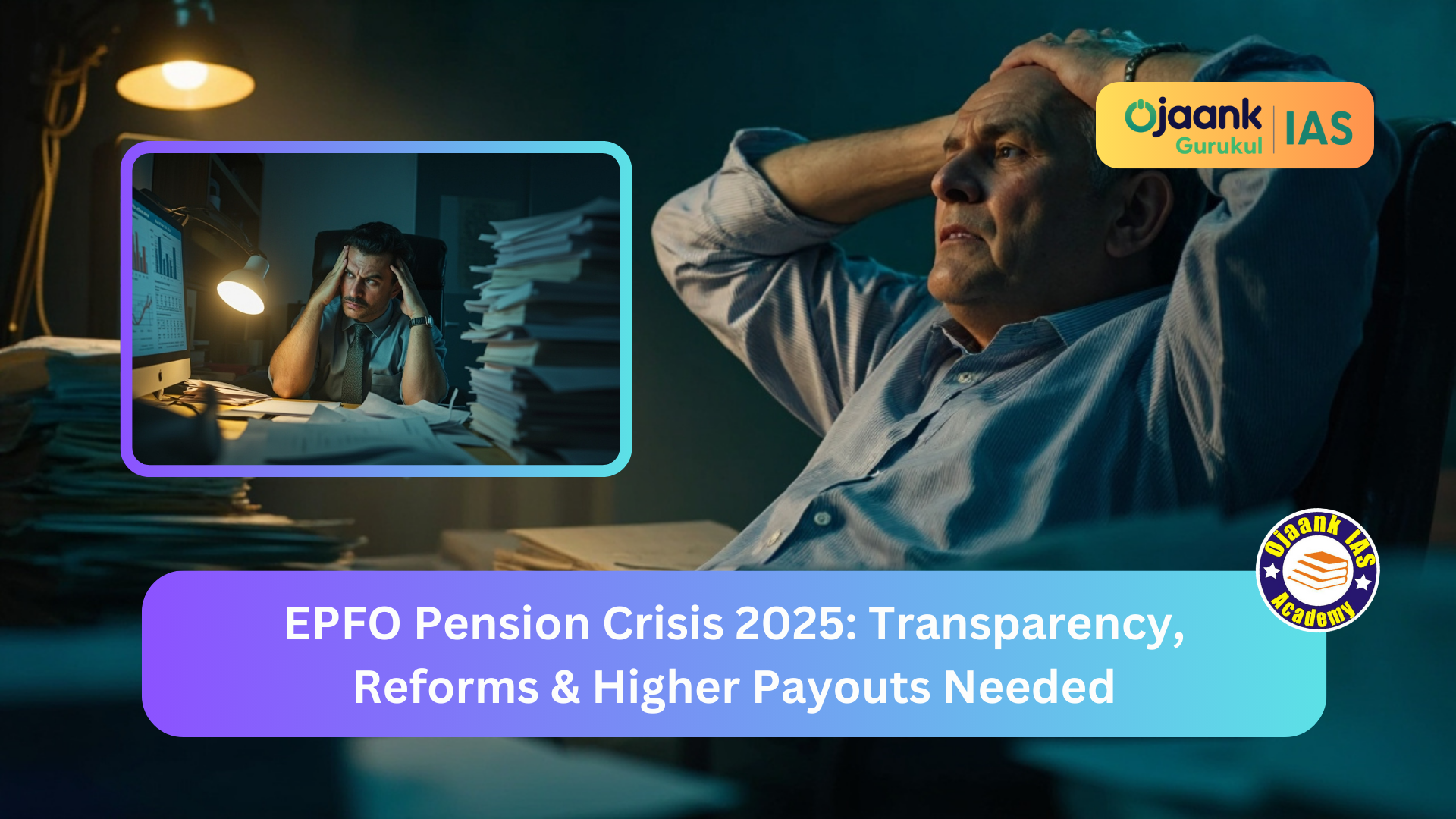EPFO Pension Crisis 2025: Transparency, Reforms & Higher Payouts Needed

Introduction
India's pension safety net is fraying at the seams — and millions of Employees’ Provident Fund Organisation (EPFO) member-pensioners are bearing the brunt. As cost of living skyrockets, the current ₹1,000 monthly minimum pension under the Employees’ Pension Scheme (EPS) 1995 has become not only outdated but also inadequate. A decade has passed since the last revision, yet the Centre has failed to act meaningfully. The situation is not just alarming—it’s unjust.
Why ₹1,000 Minimum Pension Is a National Shame
The Standing Committee on Labour, Textiles and Skill Development, in its 2025–26 demands for grants, has rightly spotlighted the absurdity of a ₹1,000 monthly pension. Originally implemented in August 2014, this figure hasn’t budged despite mounting inflation, healthcare costs, and economic hardship.
Employees’ Pension Scheme (EPS) 1995 – Understanding EPS 1995: Benefits & Challenges
Let’s not forget: this "reform" was actually a leftover policy from the UPA era. Ironically, the same BJP leaders who once slammed the pension as a “pittance” when in Opposition, now flaunt it as a flagship achievement. Senior BJP leader Prakash Javadekar even demanded a raise to ₹3,000 back then. Today, the demand is more urgent than ever.
Minimum Pension Hike Demand – Why ₹3,000–₹5,000 Pension is Necessary
The Numbers Tell a Grim Story
Currently, the Centre allocates about ₹980 crore annually toward these minimum pensions — a figure grossly insufficient for a nation of over 23 lakh pensioners under the EPS. Experts argue that this budget must at least be tripled to have any real impact.
Budget Allocation Details:
-
Current annual outlay: ₹980 crore
-
Centre’s contribution to EPS: 1.16% of wages (up to ₹15,000/month)
-
Contribution amount for 2024–25: ₹9,250 crore
-
Projected for 2025–26: Over ₹10,000 crore
Still, the government claims it "can’t afford" more—despite multiple expert-backed proposals offering viable financial strategies to manage this additional burden.
Government’s Budget Allocation for EPS – How India Allocates Funds for Pension Schemes
The Higher Pension Chaos: Lack of Clarity, Zero Communication
One of the most disturbing trends is the EPFO's poor handling of applications from employees opting for pensions based on higher wages. Many are shocked to receive demand notices for lakhs of rupees — often without any clear breakdown or prior notice.
Worse, the EPFO has failed to communicate pension entitlement amounts, arrears, or calculation methodology. Pensioners are left to rely on an online calculator — that comes with a disclaimer stating results are unofficial. It’s digital bureaucracy at its worst.
For pensioners from exempted establishments, the situation is even more dire. Their applications for higher pensions have been summarily rejected, and in several cases, sanctioned pensions have been abruptly halted — with no official reason offered. This is nothing short of a violation of trust.
Higher Pension Calculation Issues – EPFO Higher Pension Calculation: Myths vs. Facts
What Needs to Be Done Immediately
Here’s what the Centre must do to fix this broken system:
1. Revise the Minimum Pension
-
Bring it in line with inflation and basic living standards.
-
Experts recommend a minimum of ₹3,000–₹5,000 per month.
2. Ensure Transparent Communication
-
Every pension claim or update must be officially documented.
-
Stop relying on online calculators with disclaimers.
3. Reinstate and Review Rejected Claims
-
Especially for pensioners from exempted establishments.
-
Apply natural justice and provide written explanations.
4. Conduct Stakeholder Consultations
-
Involve unions, pensioners’ associations, labour economists, and civil society.
-
Transparent consultations will ensure credibility and feasibility.
Digital Bureaucracy in Pension Processing – EPFO’s Digital Pension Calculation Flaws
The Bottom Line: Pensions Aren’t Charity — They’re Earned Rights
India cannot afford to treat its ageing workforce as an afterthought. These pensions are not handouts—they are the deferred wages of those who built this nation. The Centre must step up. It’s time to end the opacity, restore faith, and honour the dignity of labour.
Let’s be real: a developed India cannot be built on broken promises to its senior citizens. A just pension system is not just policy—it’s a moral imperative.
Are you or someone you know struggling with EPFO-related pension issues? Share this blog to raise awareness. It’s time we demand what’s fair.